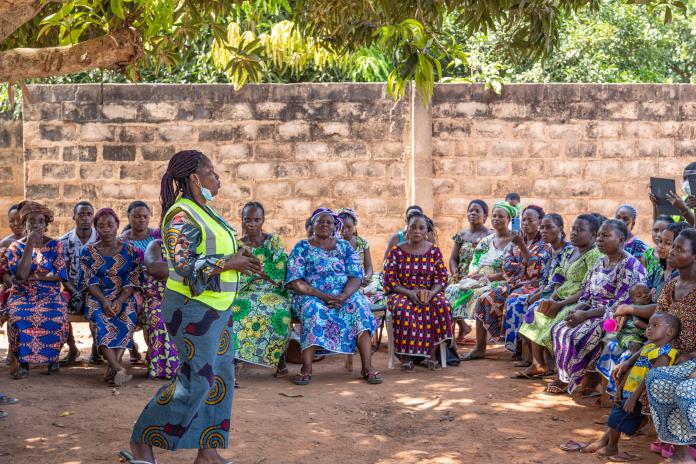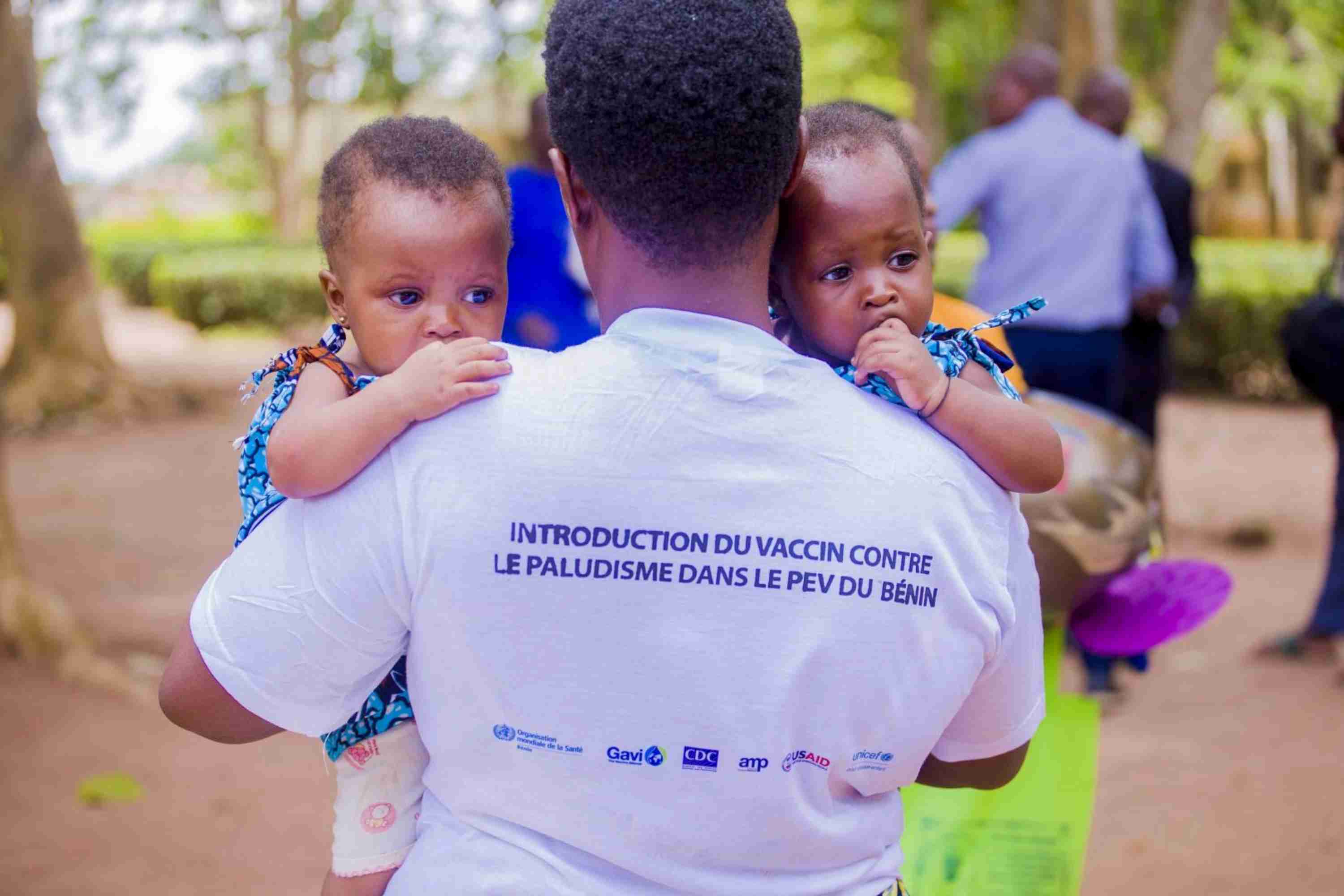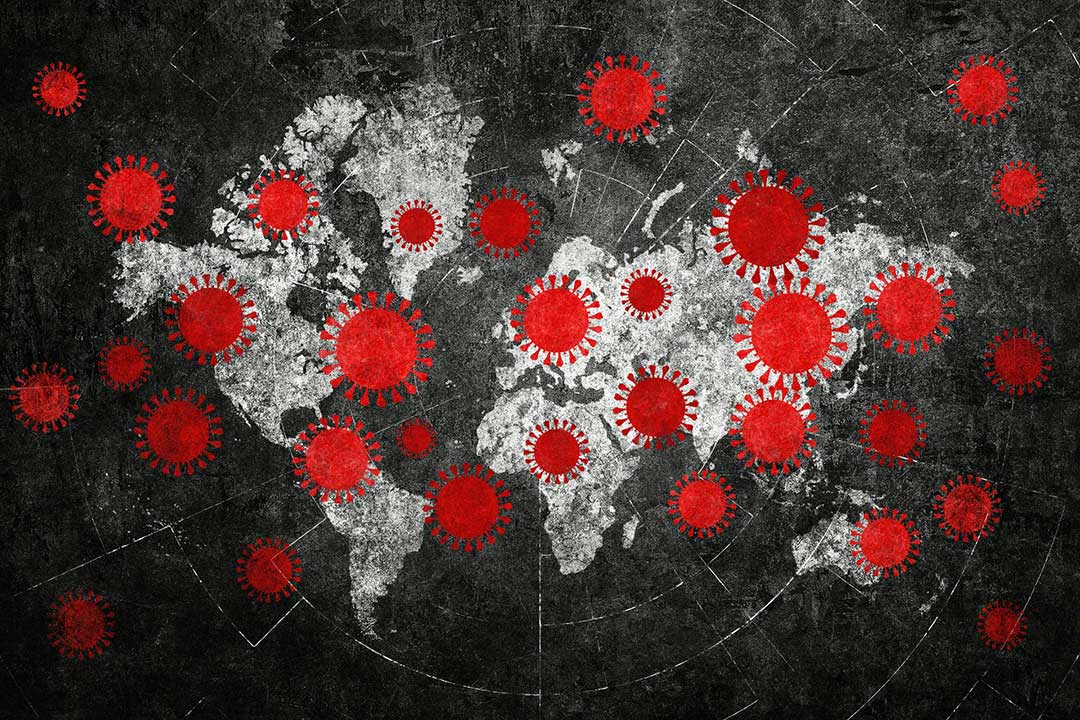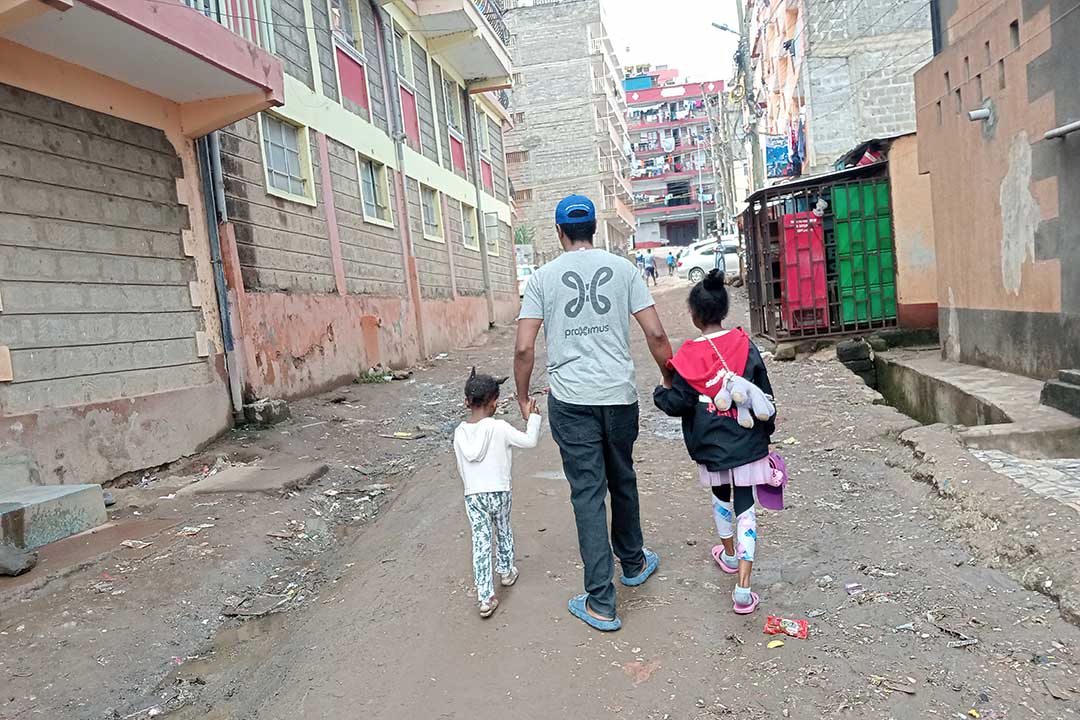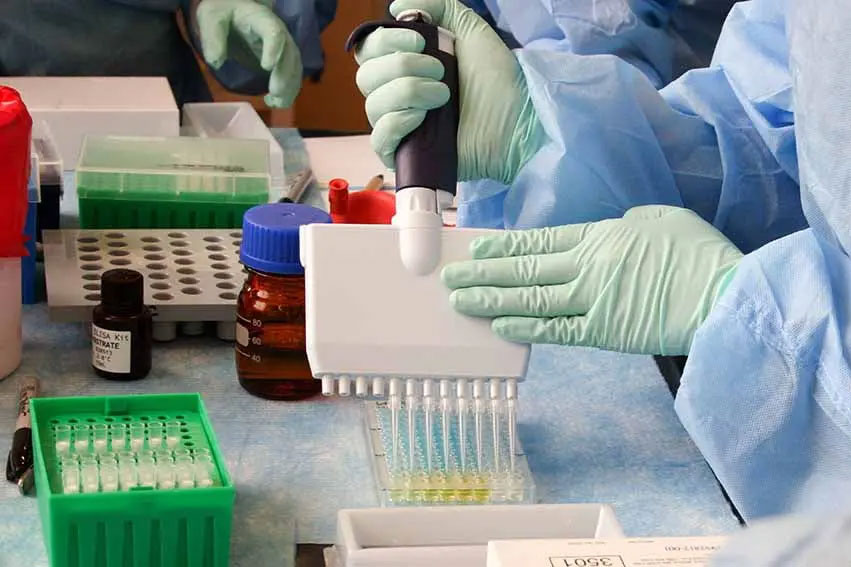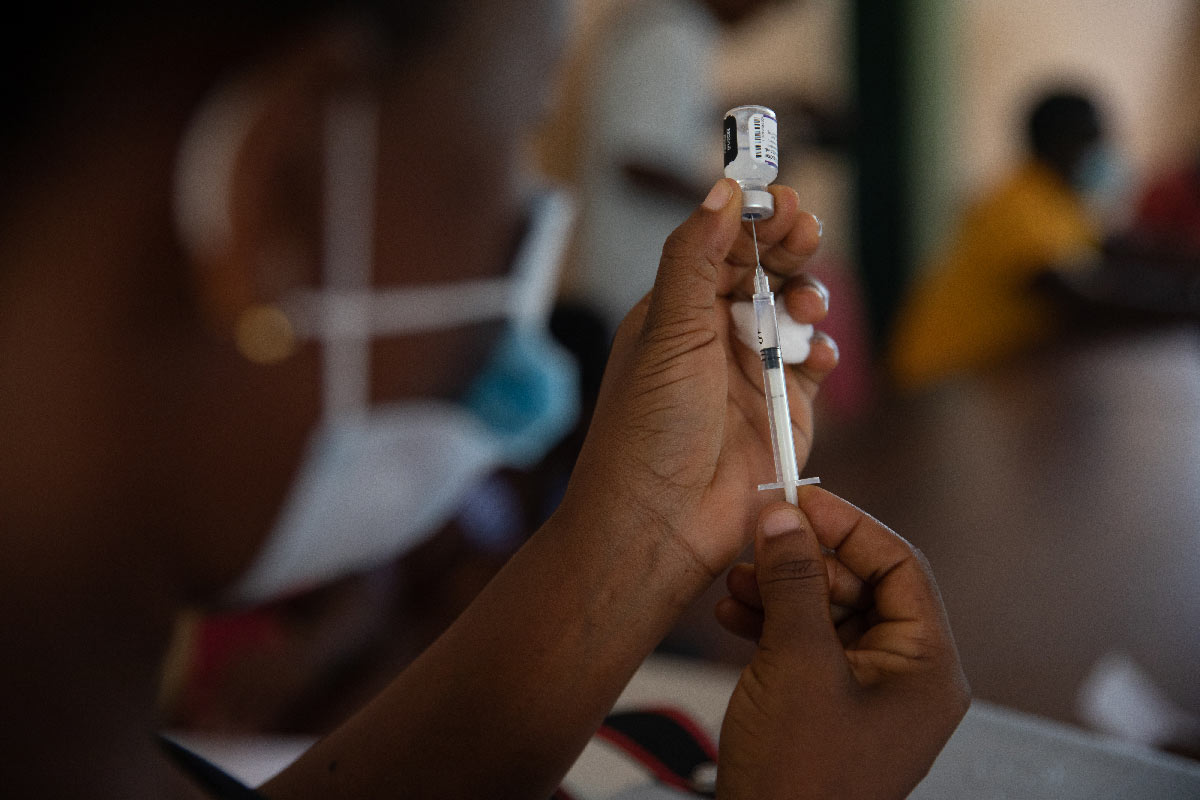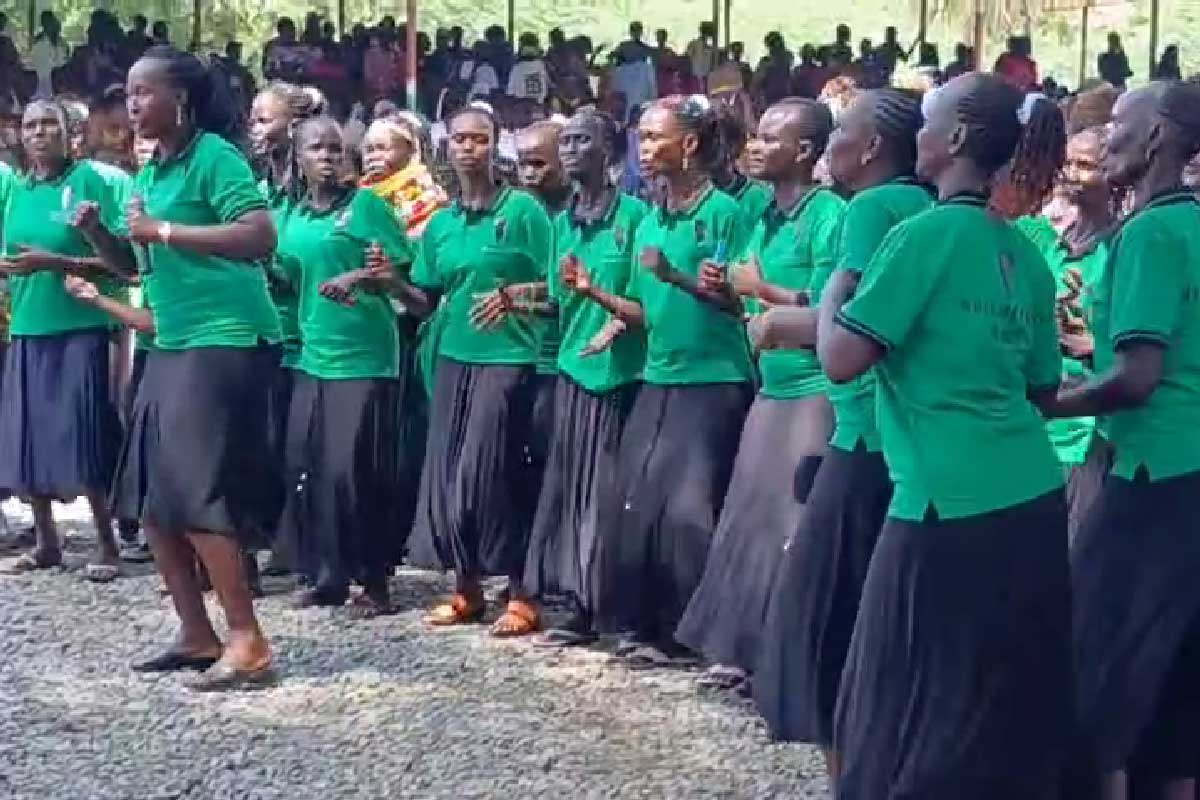From bilharzia to trust: how a Benin community is conquering healthcare hesitancy
Rita Zabo lost her son to bilharzia. She’s determined to persuade her neighbours of the value of the government’s mass drug campaigns against the parasite.
- 21 July 2025
- 9 min read
- by Edna Fleure
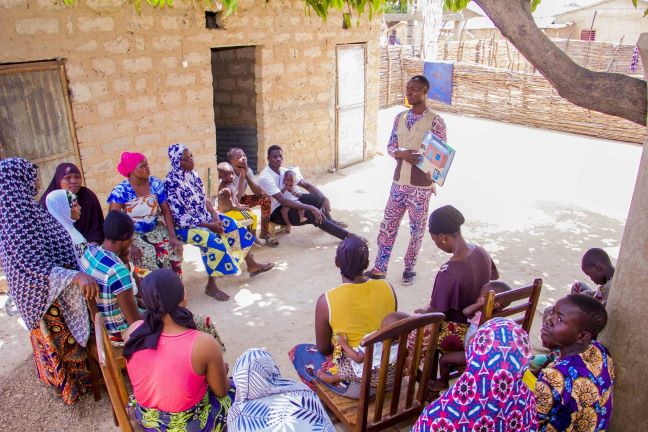
On Saturday, 5 May 2025, the town of Taiakou, in Tanguiéta district in northern Benin, is buzzing with activity. Parents have turned out in large numbers for the latest bilharzia prevention campaign. Every year, the government distributes praziquantel – an antiparasitic drug – to children aged 5 to 14 to stop the spread of this parasitic worm, which continues to cause cases of chronic illness, and even to take lives.
On the ground, a woman called Rita Zabo – ostensibly a stay-at-home mother, but in fact a committed informal helper to the public health system – is in full command, giving final instructions before local officials arrive to officially launch the campaign. Through years of dedication, Zabo has become a trusted voice in her community – and a tireless champion for children’s health.
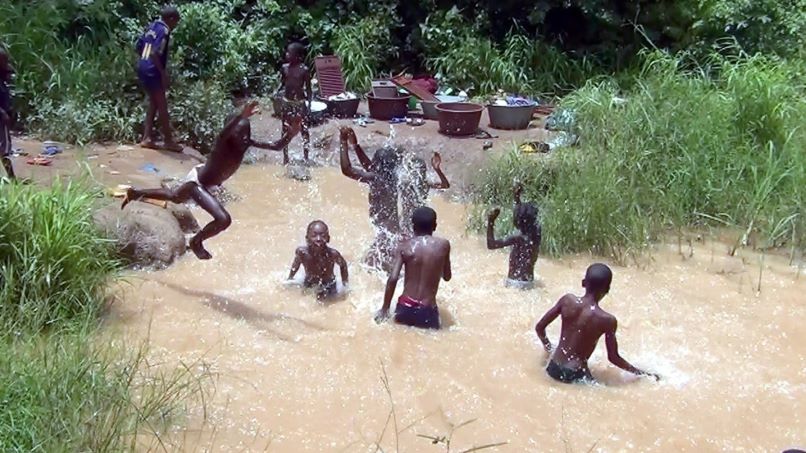
Credit: Ministry of Health
Bilharzia (also known as schistosomiasis or snail fever) is caused by parasitic blood flukes that develop inside freshwater snails. These can infect humans if they go swimming, fishing, or stand in infected water, as rice farmers often do.
Taiakou is one of the places where mass public health campaigns – whether for bilharzia or against vaccine-preventable diseases like measles, polio, yellow fever or malaria – often face resistance. In this region, where traditions run deep, such campaigns are sometimes viewed with suspicion; false rumours about the origin and effect of the campaigns can spread quickly.
Zabo knows all too well: a single poorly chosen word can undo weeks of work. Beyond fear of the unknown, many residents struggle to accept that a woman could lead an initiative aimed at shifting long-held beliefs. She understands intimately the weight – and at times the harm – of certain local convictions.
Zabo, now in her forties, lost her eldest son to bilharzia. Since that tragedy, she has made it her mission to ensure that no other child in her community suffers the same fate.
Tragic loss
Five years ago, Zabo held a well-paid job in a company in Tanguiéta. When her son began showing alarming symptoms, her family – convinced he had been cursed – forbade her from taking him to a doctor. But driven by urgency, Rita defied them and went to the local health centre. There, to her shock, she was told he had advanced bilharzia. Despite all efforts to treat him, he died a few days later. It was the first time she had even heard of the disease, which kills an estimated 12,000 people a year worldwide, and is responsible for many, many more cases of disability and chronic illness.
Since then, her loss has been the heart of her public advocacy. She often opens her awareness sessions by sharing this story.
Zabo’s experience is not unique. In the region, many families endure similar tragedies in silence. Fear, misinformation, and the weight of tradition continue to fuel resistance to health campaigns. During this latest round of preventive treatment, community workers and health staff frequently encountered flat refusals. Yet in some cases, the message got through – families who had been hesitant eventually agreed, persuaded by a familiar voice.
Zabo’s is one of those voices: known, trusted, respected. Between greetings and updates, she often speaks of her son. “It’s been five years, and I still haven’t come to terms with it,” she says. “But if there’s one thing I’ve learned, it’s that children need to be treated – and we need to listen to what the authorities are offering for their health.”
For her, the campaign offers a double opportunity: to get as many children as possible treated, and to begin dismantling the stereotypes that hold people back from seeking care.
Chronic burden
Her biggest supporter is her husband, Abdoulaye Wama, who has been living with bilharzia for more than seven years. He believes he contracted it while working in the rice fields – just like their late son. It was only after their bereavement that he realised how serious the disease could be. Now disabled, he actively supports Rita’s work. “Here, going to the hospital is usually the last resort. So it’s easy to understand why some parents are hesitant,” he says.
Still, he believes that no matter how determined she is, Zabo can’t dismantle generations of belief on her own. “Tradition is heavy. It’s hard to change habits. That’s why we try to speak in a way that respects local values, while offering another way forward.”
Proximity: a key to reaching families
Zabo continues her door-to-door visits, reminding families not to miss the treatment campaign. Her strategy is simple but effective: staying present in the community, tailoring her messages to local concerns, and working with trusted local figures.
At the market, Aminata Souantin – the market coordinator – helps her mobilise the women vendors. “With healthy children, you can look after your stalls without worry,” she tells them.
The mayor of the commune, Boukary Zakari, says he’s impressed by the scale of the mobilisation: “Until now, only funfairs and weddings drew such big crowds. I’m glad to see attitudes changing. We had to get town criers, religious leaders, and birth attendants involved… But it paid off – and it makes you want to keep going.”
At 14:00, more than four hours after the campaign kicked off, Zabo heads to a new location: the rice fields. The sun is blazing, but she doesn’t slow down. Here, the task is tougher. Several community workers have struggled to get children to leave the fields. Zabo gives it a try.
Within about 30 minutes, the conversations begin to bear fruit. One by one, the children emerge from the rice paddies. “I explained to the farmers that it’s in their interest to have healthy children, not sick ones,” she says with a smile. As always, she speaks of her son, her husband, and the families affected by bilharzia.
Joseph Sinaberogui, one of the region’s largest rice farmers, eventually agrees to let the children go. “We have our habits here, and we’re attached to our traditions,” he says. “But bilharzia has done too much damage. Taking a medicine to prevent it – that can only be a good thing.”
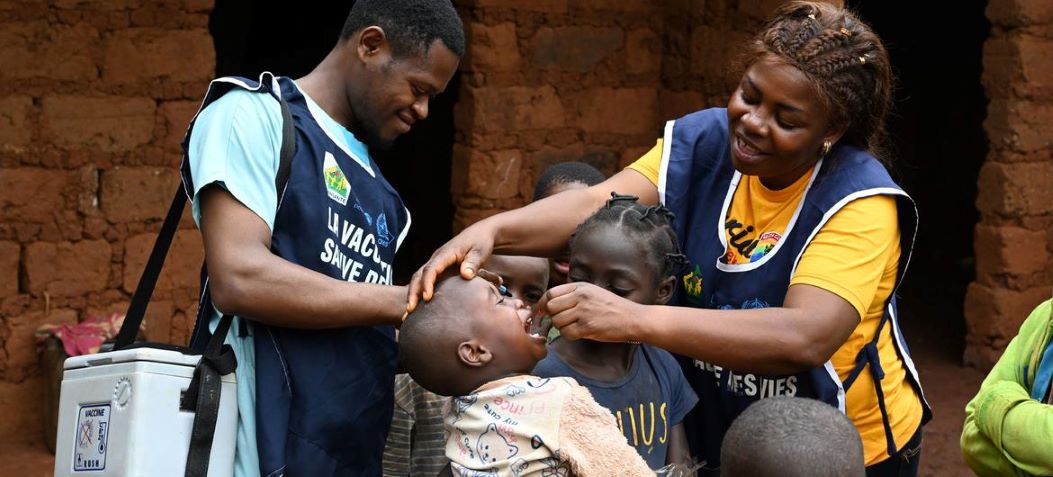
Credit: Ministry of Health
By the end of the day, the results speak for themselves: over 150 children treated – a local record. “It’s a good day. Results like this make you believe that tomorrow can be better,” says Yvette Kpankoun, a community health worker. Zabo shares the same pride. A key figure in local health efforts, she is involved in every initiative aimed at improving children’s wellbeing.
“This mission means a lot to me. It brings me real satisfaction.”
Not slowing down
On Monday, 7 May 2025, just after 07:00, Zabo is already standing in front of the local primary school – a 20-minute walk from her home. She has chosen to walk, hoping to cross paths with women heading to the market and men going to the fields – more opportunities to remind them of the importance of the treatment.
An active member of the parents’ association, she’s on familiar ground. Once at the school, she helps the community workers and health staff set up the equipment for the treatment session, which will begin after the flag-raising ceremony. The atmosphere is calm. The children take part without fear. Zabo beams: “I’m so happy… The teachers have been a huge help. It’s a very good day.”
Anicette Kora, a primary school teacher, also welcomes the campaign: “At this age, everything happens so fast. Last year, five of my pupils missed school because of this disease. This year, I’ve already lost two. We have to seize this opportunity. There’s nothing to lose.”
Have you read?
From bilharzia campaigns to zero-dose children: the same fight
According to the WHO, preventive treatment for bilharzia needs to be repeated over several years to be truly effective. Zabo hopes that medicine deliveries will continue – and that the government will fully play its part.
“A properly followed treatment offers real protection. But for that to happen, the authorities need to keep their promises.”
She regrets the lack of communication around this latest campaign. Despite all her efforts, she’s convinced some children still slipped through the cracks.
“What’s powerful about mass campaigns is the collective momentum. Parents feel they’re part of something important. You don’t need to persuade them for long. That’s why I go door to door.”
Carole Catharia Hounnouvi, a community health specialist at the Ministry of Health, led several awareness sessions during the campaign. Her message is clear: “In the most severe cases we’ve seen, the parents had never been to a hospital. They tried home remedies until things got worse. So yes, mass treatment is essential – but without awareness-raising, it’s incomplete.”
At the end of the day, Zabo heads home, exhausted but proud. On the way, she runs into the head doctor at the health centre, who congratulates her: participation has hit record levels. He encourages her to keep going – for the sake of the children, and for the health of families more broadly. At home, her husband Abdoulaye is waiting for her, too weak to have joined her that day.
The campaign may be coming to a close, but Rita has no plans to stop. She wants to keep raising awareness about stagnant water, risky bathing habits, and simple ways to prevent the disease. For her, every child spared is a victory.
These preventive treatment campaigns often reach children who would otherwise remain outside the formal health system. On the ground, many families say they only seek medical help as a last resort, after trying traditional remedies.
This reality isn’t unique to bilharzia – it also reflects the challenges of vaccination campaigns, particularly when it comes to so-called “zero-dose” children: those who have never received a single routine vaccine. The same barriers are at play – distance from health facilities, entrenched beliefs, lack of information, and mistrust of institutions.
In that sense, the strategies used in this campaign – working with local figures, door-to-door outreach, empowering community health workers – offer valuable lessons for reaching these invisible children and closing the gaps in care.

